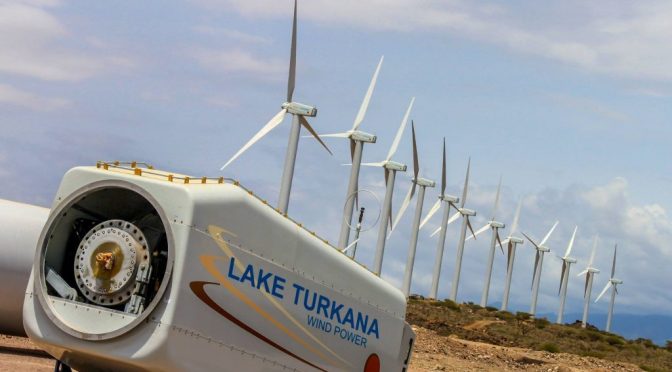The president of Kenya, Uhuru Kenyatta, inaugurated the largest wind energy plant in Africa, located near Lake Turkana in the remote county of Marsabit (northwest), which will provide 15 percent of the country’s energy.
Received by a folk retinue of local residents dressed in the distinctive adornments and garments of the 14 ethnic groups that inhabit this county, Kenyatta was bundled up with dances, claps and chants moments before his inaugural speech.
“This special occasion demonstrates our continued commitment to honor our promises to the people of Kenya, what we do ensuring the necessary energy to feed our common aspirations,” said the president in a solemn tone before a hundred authorities and business partners gathered under a large tent.
“The social and economic transformation of our land and nation is generated through forms of clean, renewable and green energy,” added Kenyatta, who landed in the town of Loiyangalani after traveling by plane more than 500 kilometers from Nairobi.
The impressive Lake Turkana Wind Power Park (LTWP), which covers an area of ??40,000 hectares, has a maximum capacity to generate 310 megawatts of electricity.
The LTWP consists of 365 Vestas wind turbines – with three poles of 25 meters each – that are distributed along a semi-arid landscape on which rests the southeastern tip of the Turkana, the largest alkaline lake in the world.
The difficult access to this almost desertic region and historically forgotten by the distant capital of Nairobi, the absence of infrastructures (a road of 200 kilometers had to be built) and the search for shareholders, among other causes, made the project needed more than ten years to finish.
“Today is a historic day, not only for LTWP but also for all of Kenya,” LTWP executive director Rizwan Fazal told international media gathered at the foot of the wind farm substation.
“We celebrated the official inauguration of a wind farm of 310.25 megawatts that we started in 2008 and which has been operational since September 25, 2018”, concluded Fazal, who assured Efe that this project “places without doubt Kenya among the first countries of the world in (consumption of) renewable energies ».
The cost has reached 680 million euros, shared between the public and private sectors, giving rise to the largest private investment in the history of Kenya.
The European Investment Bank (EIB), a financial institution of the European Union (EU), contributed 200 million euros, while the EU itself disbursed 25 million euros.
“This is our biggest investment in Kenya,” EI East Africa director Catherine Collin said at a press conference in Nairobi on Thursday, calling the LTWP a “flagship in terms of maximizing the use of renewable energy. »
The high voltage electric transmission line that connects the park with the national electricity grid was partially built by the Spanish company Isolux Corsan, which went into suspension of payments and could not complete a job that ended a Chinese group.
This remote and inaccessible area is, paradoxically, one of the best enclaves on the planet to build a wind farm, because the fact that it remains windy throughout the year allows a much higher capacity than other wind farms.
«This is one of the best places in the world. It is a unique location because the wind is stable, (pushes) high and is constant. The capacity factor that this park can reach exceeds 60% while in Europe, on average, it ranges between 20 and 30% », an employee of LTWP told Efe.
This wind farm is also surrounded by the Kulal and Njiru mountains, which create a “tunnel effect” that makes the wind received by the mills never be too strong, which in turn would stop the wind turbines.
“The wind is accelerating as it approaches the lake, where it is too strong to use it,” Fazal said.
In a symbolic way, since the installation is operational since the end of 2018, Kenyatta pressed a button before the media thanks to which three wind turbines were activated.


